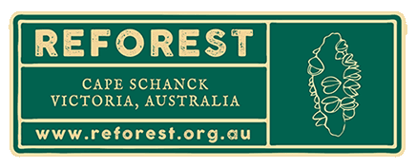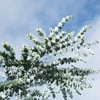Eucalyptus pulverulenta - Euc 'Baby Blue'
Eucalyptus pulverulenta - 'Baby Blue' Shrub Form.
Habit and Habitat:
Eucalyptus pulverulenta, commonly known as Baby Blue, is a charming and aromatic native Australian plant prized for its distinctive characteristics. This eucalypt species is endemic to southeastern New South Wales, where it thrives in a range of environments, primarily heathlands, rocky outcrops, and well-drained soils on margins of forests. Its striking, silvery-blue foliage and manageable size make it an excellent choice for gardens of all sizes.
Conservation Status:
This eucalypt is classified as "vulnerable" under the Australian Government Environment Protection and Biodiversity Conservation Act 1999. It was only known from about 5,400 plant in ten populations in 1990. The main threats to the species are habitat damage due to grazing, clearing of vegetation for fire trails, and its small population size.
Place in Local Habitat and Ecosystem Distribution:
In its native range, Baby Blue Eucalyptus contributes to the biodiversity of heathlands and rocky landscapes. It often forms part of the understorey vegetation in these ecosystems, providing habitat and sustenance for local wildlife.
Planting Companions:
To create an aesthetically pleasing and ecologically harmonious garden, consider planting Baby Blue Eucalyptus alongside other native species such as Banksia integrifolia, Grevillea rosmarinifolia, and Leptospermum laevigatum. These companions not only enhance the visual appeal but also support local wildlife.
Human and Wildlife Uses:
While not typically used for culinary purposes, Baby Blue Eucalyptus is highly valued for its ornamental qualities. The aromatic, round leaves and unique blue-gray foliage are popular choices in floral arrangements and landscaping. Additionally, its nectar-rich flowers attract pollinators like bees and birds.
Care Instructions:
To successfully cultivate Baby Blue Eucalyptus in your home garden, choose a sunny location with well-draining soil. This species is well-suited to drought conditions once established but benefits from regular watering during its initial growth phase. Pruning can help maintain a compact shape and encourage bushier growth.
Size, Height, Width, Flower, and Leaf Characteristics:
Baby Blue Eucalyptus is a compact shrub that typically reaches a height of 2 to 3 meters and spreads to a similar width. Its most distinguishing feature is its rounded, silvery-blue leaves that release a pleasant, menthol-like aroma when crushed. The flowers are small and inconspicuous, appearing as clusters of creamy-white blossoms.
Latin Etymology:
The genus name "Eucalyptus" is derived from the Greek words "eu," meaning well or good, and "kalyptos," meaning covered. This refers to the cap-like nature of the flower bud. The species name "pulverulenta" relates to the powdery or dusty appearance of the foliage.
Planting Guidelines:
To introduce Baby Blue Eucalyptus to your home garden, prepare well-draining soil with good sunlight exposure. Adequate spacing between plants allows for healthy growth. Regular pruning and occasional harvesting of foliage for decorative arrangements will help maintain the plant's form and vigor. Baby Blue Eucalyptus is a delightful addition to any garden, offering both visual appeal and aromatic charm.

